Instituionalising design process: with a Design framework
Brief
To streamline the design process and ensure agility, I created a design framework inspired by Lean UX principles. This framework allows the team to:
• Focus on continuous learning and iteration rather than fixed deliverables.
• Rapidly test and validate ideas with users before committing to larger development cycles.
• Collaborate seamlessly with cross-functional teams, integrating research, design, and product efforts.
At JSW One, we were scaling fast. New product lines, growing teams, tight timelines.
Design had a seat at the table — but the process was buckling under the pressure.
Everyone wanted design in the room. But feedback came from all directions, often too late.
Designers were stuck in a loop of rework, stakeholder reversals, and last-minute changes.
There was no shared understanding of how design was supposed to work at scale.
We didn’t need a new tool. We needed a new system — one that aligned with the speed of the business, respected the designer’s time, and brought clarity to chaos.
That led to the birth of the One HX Framework — a lean, lightweight UX operating model built for high-velocity teams
The problem
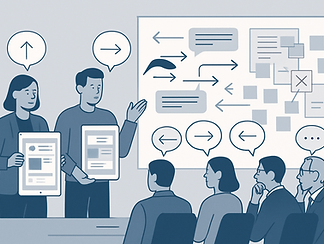
Feedback loops were long and unstructured
Feedback came from 3–4 teams at different times, often with long turnaround cycles. This fragmented and delayed input frequently derailed delivery timelines.

Decisions got reversed mid-sprint
Management would often change design directions late in the sprint — sometimes even post-production — causing significant waste and delaying deliveries.
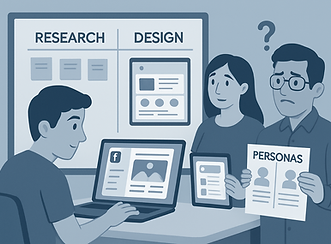
Designers worked on polished screens too early
The presence of a design system made it tempting to jump into high-fidelity mockups prematurely. Combined with shifting inputs, this led to rework and rising frustration among designers.

There was no agreement on when design was ‘done’
Designs kept evolving at every stage, making it unclear when a design was actually final and ready for handoff — leaving teams stuck in a cycle of uncertainty.
The above led to...
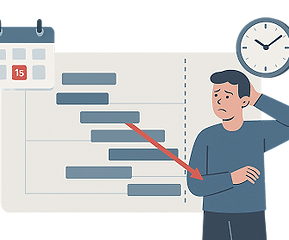
Project delays

Team frustration

Erosion of trust

Design seen as a bottleneck
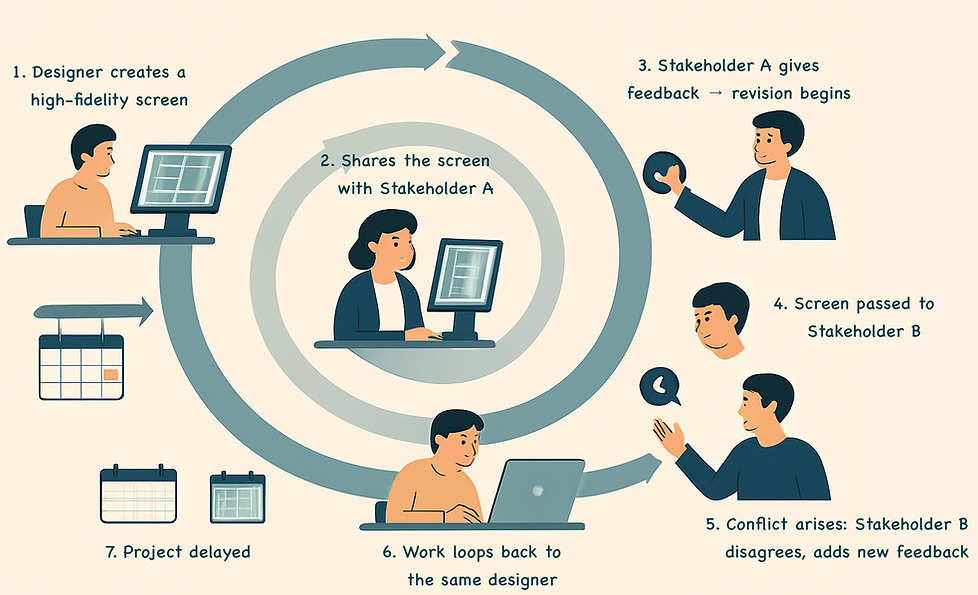
The Insight
We didn’t need to fight for fewer voices.
We needed a shared language, shared rhythm, and shared system.
The goal wasn’t to slow down feedback — it was to make it structured, purposeful, and timely.

“No matter the speed of the organisation, when it comes to design , everyone wants to be a designer.”
The fix: customising Lean UX framework

Base Framework: Lean UX — fast, iterative, feedback-driven
We used Lean UX as a foundation, but extended it to fit our first-mover context — adding research and feedback loops to close the learning gap.
As we looked for a foundation to build on, we chose the Lean UX framework — popular among high-velocity product teams for its fast iteration loops and minimal documentation overhead.
But our context was different.
We were first movers in the MSME segment, which meant we had to start with research — to understand how steel buyers think, purchase, and interact digitally. And because trust was critical, we needed a way to measure the effectiveness of our design decisions through usability testing and structured feedback.
So we took Lean UX as the base, but evolved it into a custom framework — blending speed with structure, and turning creative chaos into an aligned design system.
We didn’t copy-paste Lean UX. We rebuilt it to suit our org’s priorities and people.
The solution
One HX framework
Designed to reduce waste, create clarity, and scale UX with confidence

One HX stands for One Human Experience, where "One" comes from the company name "JSW One".
Components of this framework
We built the One HX framework around five key components — each designed to reduce waste, align teams, and bring predictability to the UX process:

Think
We made research non-negotiable before starting any design work.
As first movers in the MSME space, it was essential to understand how these buyers think, behave, and make decisions — before proposing any solution.

Make & Check
This was the heart of the framework: rapid sketching and structured feedback.
The real bottleneck wasn’t design itself — it was the feedback loop, and the delays caused by scattered opinions and unclear expectations.
Key improvements introduced in this phase:
-
Introduced distinct wireframe stages: W1, W2, and Visual Design — each with a specific feedback focus.
-
Replaced 7–8 unstructured iterations with just 3 structured rounds.
-
Made feedback within 24 hours mandatory, with only 2 feedback cycles allowed before moving to visual design.
-
Clarified what kind of feedback is expected at each stage, reducing back-and-forth confusion.
-
Introduced usability testing with real users to inform design direction — addressing the earlier lack of playbooks or validation.
-
ion.
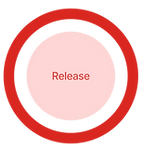
Release
We clearly defined Visual Design as the final stage before development hand-off — no design feedback was entertained beyond this point.
This gave the team a predictable and reliable “Ready for Grooming” milestone, which helped product managers confidently plan launch dates.

Measure
We closed the loop by bringing in both user feedback and analytics data. This helped us identify what was working, what wasn’t — and where to optimize.
Fixing Feedback Culture
The problem wasn’t just speed — it was habit.
People gave feedback:
-
Too late
-
On final screens
-
Without user context
-
And in isolation
We redesigned the feedback experience itself.
Habit | Before | After |
|---|---|---|
Urgency
| Ad hoc approvals
| Weekly feedback rituals
|
Quality | Shallow comments | Structured critique sessions
|
Timing | Late-stage feedback | Early wireframe reviews |
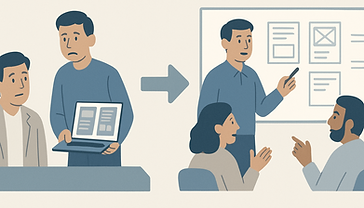
We moved feedback to the start — from late-stage panic to early team alignment.
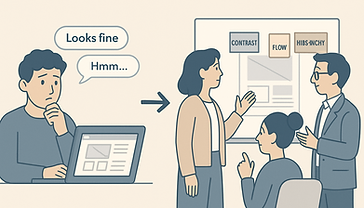
Vague comments evolved into structured critique, improving design depth.
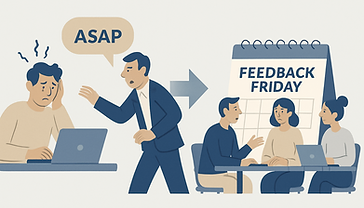
We replaced ad hoc approvals with calm, consistent feedback rituals.
The implementation
Any system doesn’t work on its own — no matter how effective it is.
And every new system comes with friction: overheads, commitments, and accountability.
We started intentionally small:
One product
One cross-functional team
Shared rituals and documentation
This gave us a focused sandbox to test and learn — without resistance from scale.
What happened in just 4 months:
Month | Milestone | Impact |
|---|---|---|
1 | Pilot Launched
| Rituals tested with one team using One HX
|
2 | 3 Teams Adopted It
| Teams voluntarily onboarded — without being pushed
|
4 | Org-Wide Rollout
| Became part of sprint planning, retros, and OKR reviews
|
The impact
The framework didn’t just streamline design — it transformed how teams collaborated, communicated, and delivered.
What changed on the ground
Design time was blocked in calendars by default — not debated.
Feedback arrived within 24 hours, without reminders.
PMs planned confidently, knowing design timelines were predictable.
Dev handoffs became smooth — no more last-minute clarifications.
And perhaps the most telling signal:
Adoption spread without resistance — we didn’t have to sell it anymore.
Result

Design Delivery Speed
Before:
Unpredictable timelines, often delayed
After:
Delivery speed improved by 50%, with fewer last-minute changes.
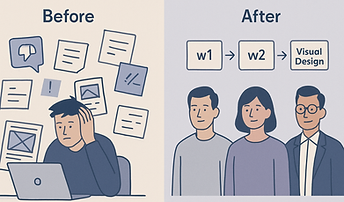
Number of Iterations
Before:
7–8 unstructured rounds per feature
After:
Reduced to 3 structured iterations with clear stage exits.

Feedback Quality
Before:
After:
24-hour feedback window with structured critique sessions.
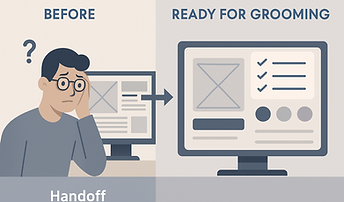
Design–Dev Handoff Clarity
Before:
Frequent confusion and post-handoff revisions
After:
Clear ‘Ready for Grooming’ marker at visual design completion.
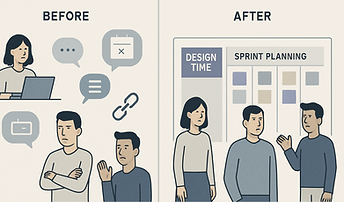
Team & Stakeholder Alignment
Before:
Design seen as reactive and fragmented
After:
‘Design Time’ respected in planning, retros, and OKRs
